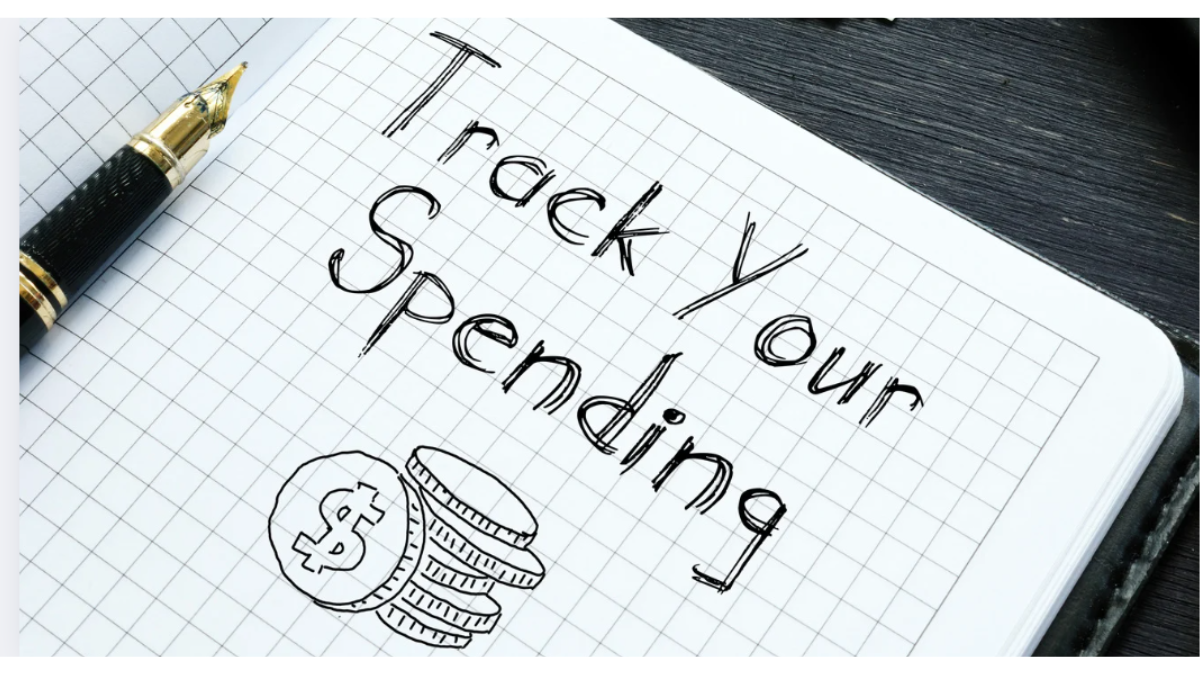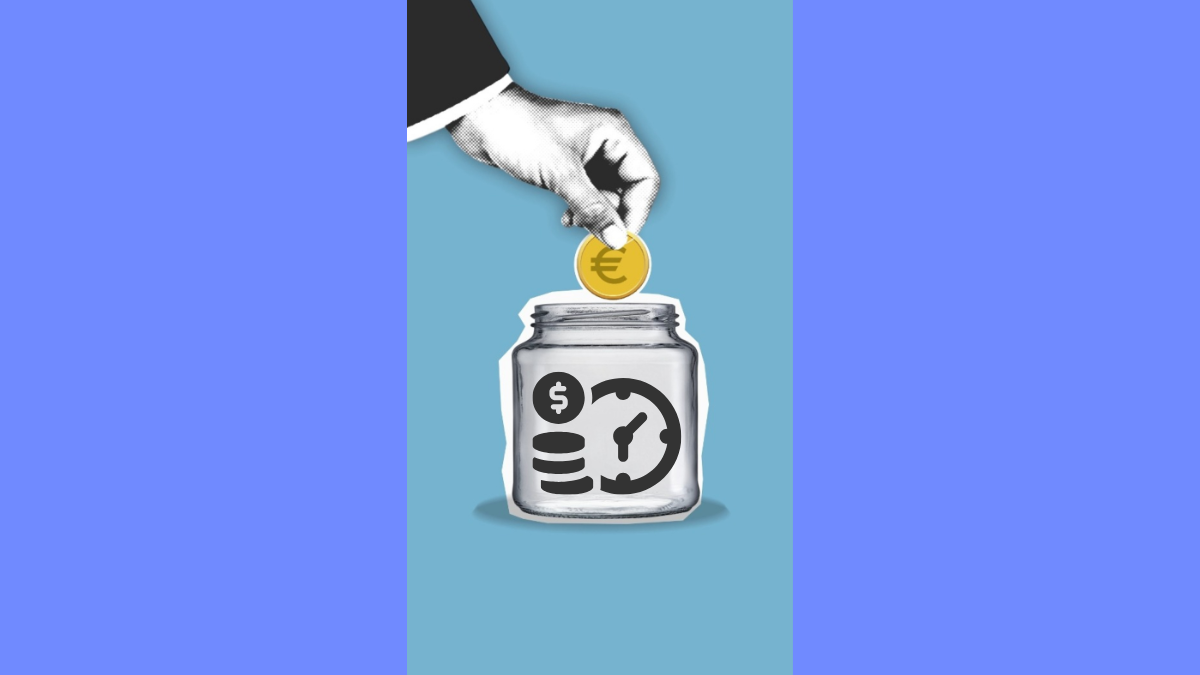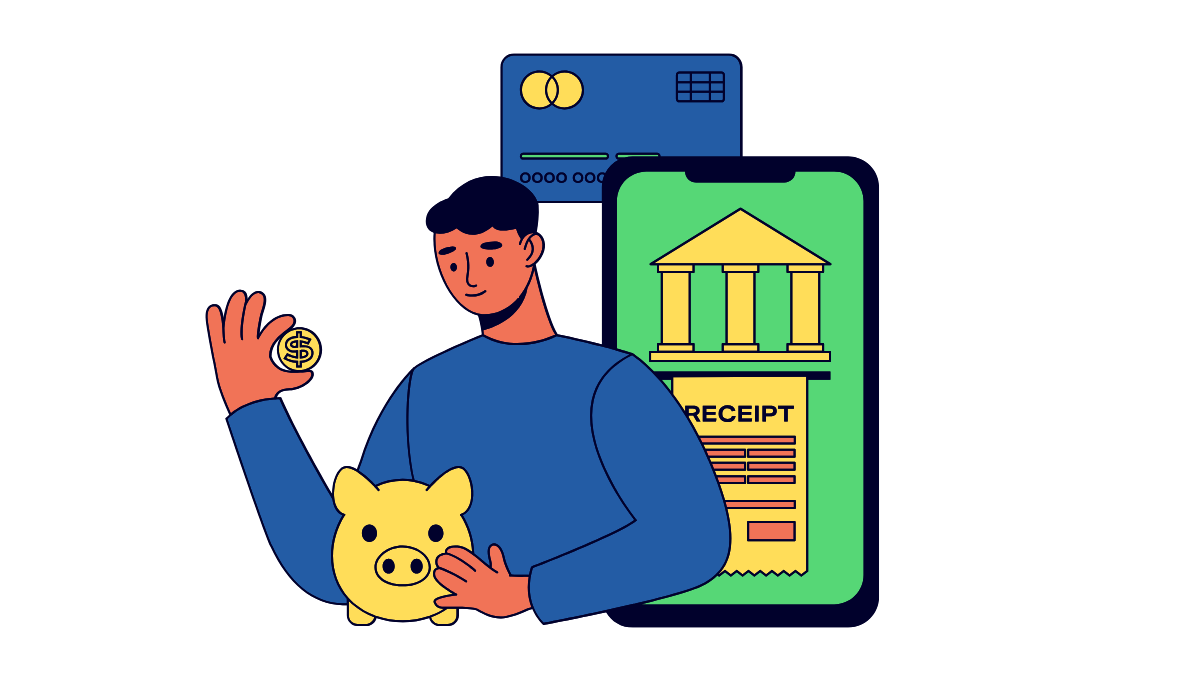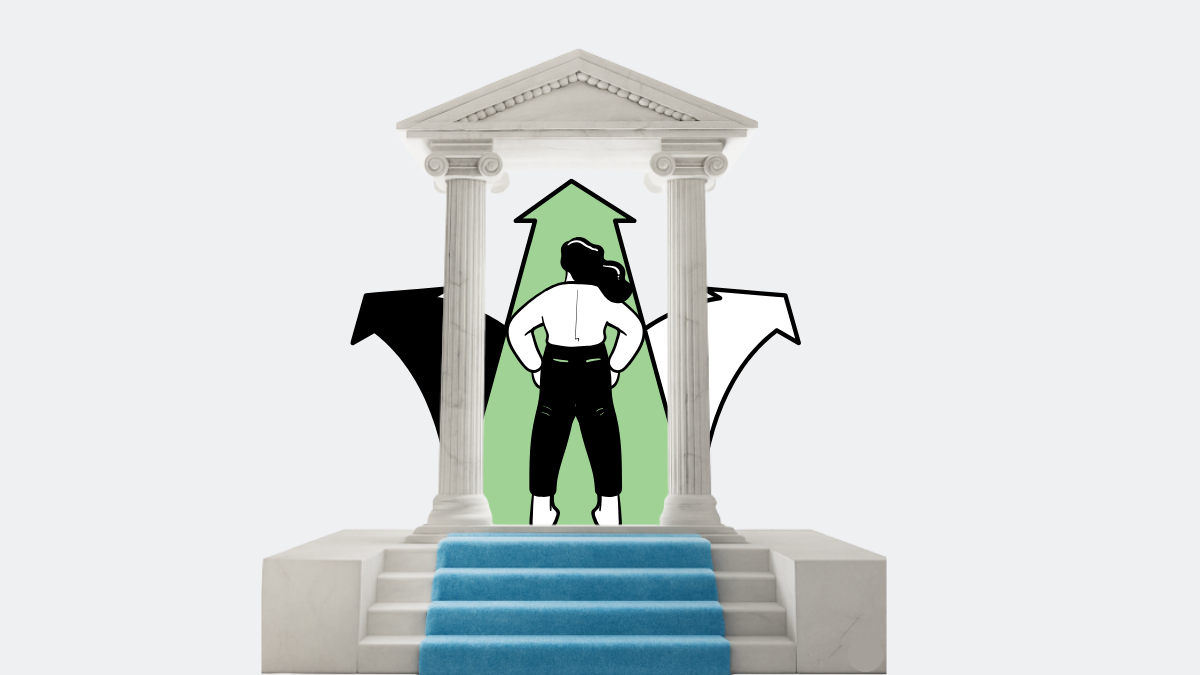What Is a Loan?
A loan is an agreement where you receive money from a lender with the commitment to repay it over time, typically with interest. It's a tool that allows you to access funds for major expenses like buying a car, going to school, or covering unexpected costs — without needing to have the full amount upfront.

How Loans Work
When you take out a loan, you agree to a few core conditions:
- Principal: the original amount you borrow.
- Interest: the cost of borrowing, usually expressed as an annual percentage rate (APR).
- Repayment terms: how long you’ll take to pay it back and how often (monthly in most cases).
- Fees: additional costs like origination or late fees, depending on the lender.
Each monthly payment typically includes:
- A portion of the principal
- The interest charge
- Any fees due that period
Note: Some lenders charge prepayment penalties, meaning you may pay a fee for paying off a loan early. Always read the full terms before agreeing.
Real Example
Let’s say you borrow $10,000 at 8% interest for 3 years. You don’t just repay $10,000 — you pay a total that includes all interest accrued over time, which could amount to several hundred or even a few thousand dollars depending on the structure.
Pro Tip: Use a free loan calculator before accepting any loan. Knowing the total repayment amount helps you avoid surprises.
When Should You Consider a Loan?
Loans can be helpful when used for goals that offer long-term value or stability. Common reasons to borrow:
- Buying a reliable car for commuting
- Paying for job training or higher education
- Covering emergency expenses
- Consolidating high-interest debt into one manageable payment
- Building or rebuilding your credit score
Strategy: If the loan helps you earn more, save interest, or build your credit, it may be a smart move — as long as the terms are fair and manageable.
When a Loan Can Hurt You
Borrowing money just to cover short-term wants or monthly gaps can make your financial situation worse. Be cautious if:
- You’re using loans to fund non-essential purchases
- You don’t have a clear plan to repay
- The loan comes with very high interest or unclear terms
Watch Out: Payday loans or no-credit-check loans may seem easy but often trap people in cycles of debt. Always compare options before committing.
Common Types of Loans
There are many types of loans — each designed for a specific purpose. Choosing the right one depends on your financial goals, what you need the money for, and how soon you can repay it.
What it is: Unsecured loans you can use for almost anything — debt consolidation, home repairs, major purchases, or emergencies.
- No collateral required
- Fixed interest rate & term
- Predictable monthly payments
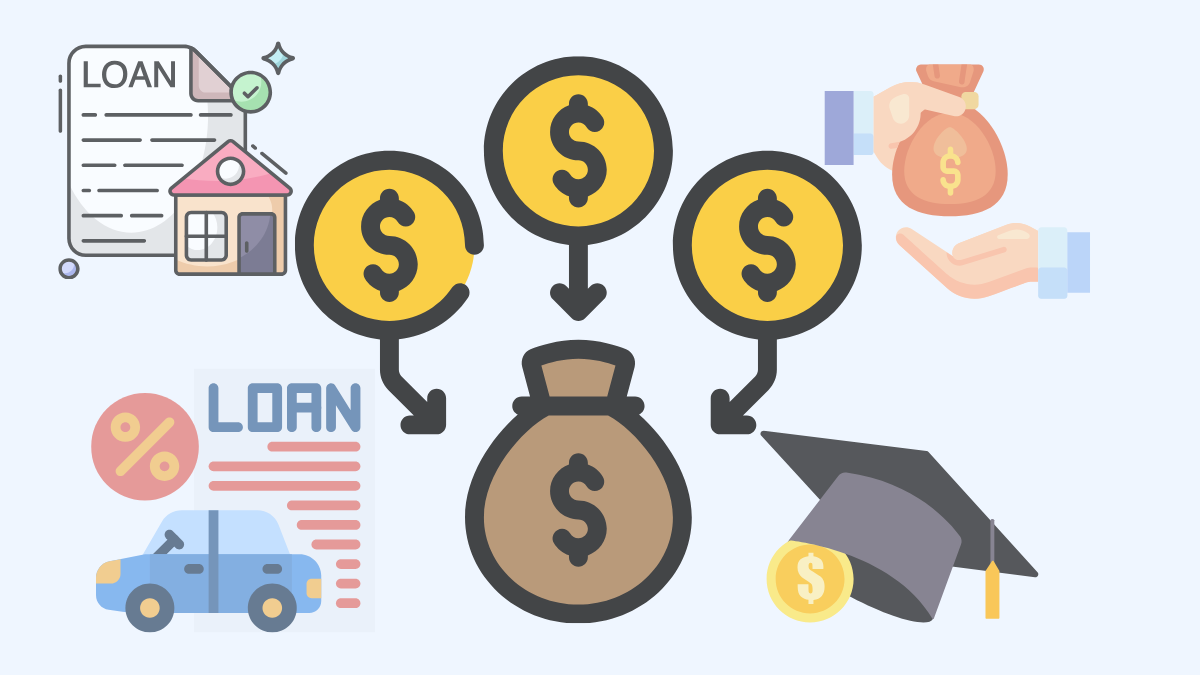
Pro Tip: Always compare the APR, not just the interest rate — it includes all fees.
2. Auto Loans
What it is: Used to finance a vehicle. The car itself typically acts as collateral.
- Lower interest rates compared to unsecured loans
- Risk of repossession if you miss payments
- Often offered by dealerships, banks, or credit unions
Strategy: Get pre-approved from a bank before visiting a dealer — it gives you more negotiating power.
3. Student Loans
What it is: Loans specifically for education-related costs like tuition, books, and housing.
Types:
- Federal loans: Offered by the government, often with flexible repayment options.
- Private loans: From banks/lenders, with stricter terms and fewer protections.
Note: Federal loans offer benefits like income-driven repayment and potential forgiveness — always apply for those first.
4. Mortgage Loans
What it is: Used to purchase a home. The home is the collateral.
- Large loan amounts
- Long repayment terms (15–30 years)
- Must meet strict credit and income criteria
Watch Out: A lower credit score can mean tens of thousands more in interest over the life of a mortgage.
5. Credit-Builder Loans
What it is: Small loans specifically designed to help you build or repair your credit.
How it works: You “repay” the loan over time, but the lender holds the funds until it’s fully paid. Your payments are reported to the credit bureaus.
Smart Move: If you're just starting to build credit, this can be a safe and low-risk way to begin. Learn more in our Building Credit guide →
6. Payday Loans (Avoid These)
What it is: Short-term loans with very high fees, often marketed to people with no credit or urgent needs.
- APRs can exceed 300–500%
- Repayment is due on your next paycheck
- Often leads to a debt cycle
Watch Out: These loans may seem convenient but are designed to trap borrowers in high-interest debt. Consider safer alternatives like local credit unions or community financial programs.
7. Home Equity Loans / HELOCs
What it is: Borrowing against the value of your home.
- Home Equity Loan: Lump sum with fixed payments.
- HELOC: Home Equity Line of Credit that works like a credit card with variable interest.
Note: These are best for major projects like renovations — but they put your home at risk if you default.
By understanding which loan fits your needs, you can avoid high fees, manage your payments better, and borrow with confidence.
How Interest and Repayment Terms Work
Understanding how loans cost you money over time is just as important as knowing what type of loan to choose. The interest rate, repayment schedule, and loan term directly affect how much you’ll end up paying — sometimes thousands more than the amount you borrow.
What Is Interest?
Interest is the fee a lender charges for letting you borrow money. It’s usually expressed as a percentage of the loan amount, called the Annual Percentage Rate (APR) .
- Fixed interest rate: Stays the same for the life of the loan.
- Variable interest rate: Can go up or down based on market conditions.
Note: APR includes not just the interest rate, but also any fees (like origination fees), giving you a clearer picture of your true cost.
How Repayment Works
When you repay a loan, your monthly payment typically includes:
- A portion of the principal (the amount you borrowed)
- An interest charge on the remaining balance
Most loans follow an amortization schedule — meaning early payments go more toward interest, and later payments go more toward principal.
Example: On a $10,000 loan with a 7% APR and 3-year term, you might pay around $308/month. Over time, that adds up to $11,088 — meaning you paid $1,088 in interest.
What Is a Loan Term?
The loan term is the length of time you have to repay the loan — usually expressed in months or years.
| Loan Term | Common Lengths | Trade-off |
|---|---|---|
| Short-Term | 12 to 36 months | Higher monthly payments, less interest overall |
| Long-Term | 48 to 72+ months | Lower monthly payments, more interest paid over time |
Pro Tip: If you can afford it, choose a shorter term to save money on interest — but always ensure the payment fits your budget.
Why Interest Adds Up Fast
Even a low-sounding interest rate can result in thousands of dollars in added cost depending on:
- The loan amount
- The length of the loan
- Whether your rate is fixed or variable
- Whether you pay on time
Watch Out: Missing payments or making only minimum payments can extend your loan and increase total interest dramatically.
How to Minimize Interest Payments
- Compare lenders and offers — look at APR, not just the rate
- Make extra payments when possible
- Avoid loans with prepayment penalties
- Pay on time every month
- Opt for auto-pay when available to avoid late fees
- Borrow only what you need — less principal means less total interest
Strategy: Knowing how interest and repayment work allows you to compare loan offers smartly and avoid overpaying. The difference between a 6% and 10% APR can be thousands of dollars.
What You Need to Qualify for a Loan
Before a lender approves your loan application, they evaluate how risky it is to lend you money. This is called underwriting, and it determines whether you qualify — and at what rate. Knowing what lenders look for can help you prepare, negotiate better terms , and avoid rejection.
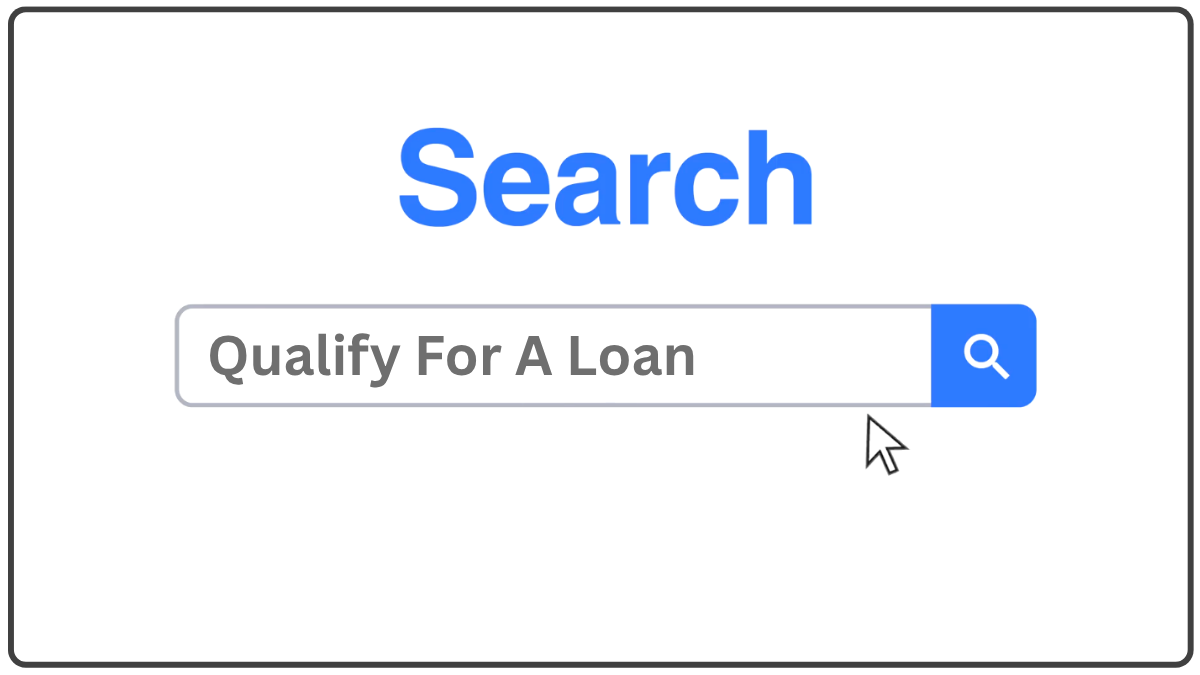
Key Loan Approval Criteria
Most lenders assess the following factors:
1. Credit Score
Your credit score tells lenders how reliably you’ve paid debts in the past. The higher your score, the more likely you’ll:
- Get approved
- Qualify for lower interest rates
- Receive larger loan amounts
| Score Range | Rating |
|---|---|
| 720–850 | Excellent |
| 690–719 | Good |
| 630–689 | Fair |
| Below 630 | Poor (high risk) |
Note: You can still qualify with a lower score, but you may need a cosigner, collateral, or accept higher interest.
2. Income and Employment
Lenders need to see that you have a steady source of income to repay the loan. They’ll often ask for:
- Pay stubs or W-2s
- Bank statements
- Employer verification or tax returns (if self-employed)
3. Debt-to-Income (DTI) Ratio
Your DTI ratio compares your monthly debt payments to your monthly income.
Example: If you make $4,000/month and pay $1,000 in debt, your DTI = 25%.
Most lenders prefer a DTI below 36%. If it’s too high, it signals you may be overextended — and could struggle with more debt.
4. Collateral (for Secured Loans)
For loans like auto or home loans, the lender uses the property as security. If you don’t repay:
- The lender can seize the collateral (repossession or foreclosure)
Unsecured loans (like personal loans) don’t require collateral but usually have higher interest rates.
5. Loan Purpose
Some lenders ask what the money is for. Common reasons include:
- Debt consolidation
- Home improvement
- Education
- Medical expenses
Strategy: Be clear and realistic about how the loan will be used. Lenders favor practical, low-risk uses.
How to Improve Your Chances of Approval
- Check your credit report and fix any errors
- Pay down existing debt to lower your DTI
- Avoid applying for multiple loans at once
- Gather your documents ahead of time
- Consider a cosigner with strong credit (if needed)
Pro Tip: If you're just starting your credit journey, consider building credit first with a secured card or a credit-builder loan. Explore how →
Smart Borrowing Tips (And What to Avoid)
A loan can be a helpful financial tool — or a long-term burden. The difference often comes down to how you approach borrowing. Use these tips to borrow responsibly, minimize risks, and avoid costly mistakes.
Borrow Only What You Truly Need
Just because you qualify for a larger loan doesn’t mean you should take it. More borrowed money means:
- Higher monthly payments
- More interest over time
- Greater pressure on your finances
Pro Tip: Borrow with a purpose, not with temptation. Stick to your original reason for the loan and avoid inflating your budget just because you can.
Compare Loan Offers Carefully
Never take the first offer you receive. Comparing multiple lenders helps you:
- Find lower interest rates
- Avoid hidden fees
- Choose better repayment terms
Compare:
- APR (not just interest rate)
- Total repayment cost
- Monthly payment amounts
- Fees and penalties
Strategy: Use online marketplaces or pre-qualification tools that let you compare offers without hurting your credit score.
Understand the Fine Print
Before accepting any loan, read:
- Interest rate and APR
- Repayment schedule
- Late fees and grace periods
- Prepayment penalties
Note: Some lenders charge extra if you repay the loan early. Others raise your interest after one missed payment. Knowing these terms upfront protects you.
Don’t Overextend Your Timeline
Longer loan terms might seem easier because of the lower monthly payments, but they often cost you more in total interest.
Example:
$10,000 over 3 years at 7%: ~$308/month, ~$1,088 total interest
$10,000 over 6 years at 7%: ~$170/month, ~$2,245 total interest
Watch Out: Choosing a long-term loan just for lower payments can double your interest cost.
Avoid Predatory or High-Risk Loans
Some loan types are designed to exploit borrowers — especially those with limited credit history or urgent needs. Avoid:
- Payday loans
- Title loans
- Loans with no credit check and high APRs
Warning: These lenders rely on borrowers falling behind and often trap people in cycles of debt. Safer options include local credit unions, online personal loans, or credit-builder loans.
Set Up Auto-Pay (if Available)
Many lenders offer a small interest rate discount if you sign up for auto-pay. Even more importantly, it helps you:
- Never miss a payment
- Avoid late fees
- Protect your credit score
Link Opportunity: Learn more about setting up automatic payments here →
Smart borrowing comes down to awareness, discipline, and planning. Before taking any loan:
- Know your goal
- Research your options
- Understand the total cost
Loans That Help You Build Credit
Loans aren’t just for borrowing money — they can also help you build or rebuild your credit score when used responsibly. This is especially important if you’re new to credit or working to repair past mistakes. The key is choosing credit-friendly loans that report to the major credit bureaus and offer manageable terms.
1. Credit-Builder Loans
These loans are designed specifically to help you build a credit history.
How they work:
- You don’t get the money upfront.
- You make fixed monthly payments into a savings account.
- Once fully paid, you receive the money — and your payments are reported to credit bureaus.
Why it works:
- Demonstrates consistent payment history
- There’s no risk of overspending
Pro Tip: These are great for beginners. Many credit unions and online lenders offer them with low amounts ($300–$1,000) and short terms (6–24 months).
See more strategies in our Building Credit guide →
2. Secured Loans
A secured loan is backed by collateral — often cash you deposit in advance.
Common example:
- You deposit $500 into a bank or credit union.
- They give you a $500 loan, which you repay monthly.
- They report your payments to the credit bureaus.
Why it works: Lower risk for the lender = easier approval and a safe way to show responsible repayment.
3. Personal Loans (Small, Short-Term)
If you have a little credit history or fair credit, a small personal loan can help improve your credit profile.
To make it effective:
- Keep the amount low
- Choose a short term (12–24 months)
- Pay on time, every time
Strategy: Avoid using personal loans to pay off other personal loans — that’s a red flag for lenders and can hurt your credit if it becomes a pattern.
4. Student Loans (If Paid Responsibly)
If you're still in school or recently graduated, federal or private student loans can contribute to your credit — but only if you:
- Make payments on time (during repayment or deferment)
- Don’t let the loan go into default
Watch Out: Late or missed student loan payments stay on your credit report for up to 7 years.
What to Look for in a Credit-Friendly Loan
When your goal is credit building, make sure the loan:
- Reports to all three credit bureaus (Experian, Equifax, TransUnion)
- Offers manageable monthly payments
- Has no hidden fees or penalties
Bonus Tip: If you set up automatic payments and always pay on time, you’re actively building your credit month by month — without needing a credit card.
Resources
Advertiser Disclosure
Covers all major types of loans (personal, auto, student, mortgage) and how they work, from a non-biased federal source.

Official U.S. Department of Education site for student loans — trusted and comprehensive.

Gives real-world examples, lender comparisons, and APR ranges — very actionable for readers.


